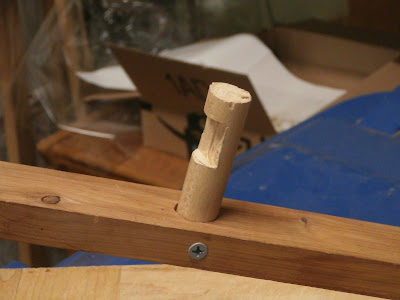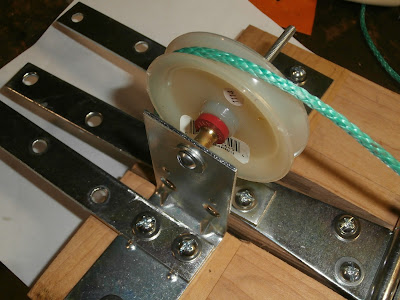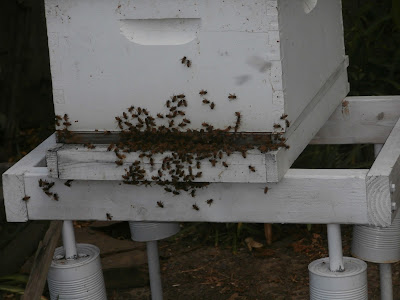There are
many reasons to follow the weight of the hive. Basically, it is a simple way to monitor the health and activity of the hive. There are also a multitude of ways to do it, from low tech, such as lifting the hive onto a freight scale, to high tech electronic devices. And then, of course, is the multitude of homemade devices. I would have liked a fancy, easy to use electronic device but could not justify the expense. I decided to make a pry scale. I used
this blog and this
YouTube as my guidelines. Of course, my hives' set-up is not the same as others and the lifters needed to be longer. These are my detailed plans.
The parts were assembled by means of a few trips to three different hardware stores as well as digging through my collection of wood scraps and nuts and bolts. I got the
Dyneema string at West Marine, where I was not charged because I had had to wait way too long. I got
the scale on line.
Then to build it. First, without measuring, I used one of the hinges to determine the size of the hinged piece and cut it out of an old cutting board. The pulley was a
clothes line pulley and I had to drill and punch out the plastic bracket. The
angle braces had to be far enough apart to allow the hinged piece to move so I made spaces with flat plumbing washers and
some sort of ferrules I had from a long forgotten job.
Then I laid out the pieces on an old cutting board and marked where to drill holes for the bolts. I used the
drill press I got from my father. I also had to drill extra holes through the hinges for the lift bars.
Here is the finished product:
The lifting bars required a space between the frame and the stand which I accomplished with 1/4 inch shims cut from another scrap of wood.
 |
| Shim in place |
 |
| Space for lifting bars |
Now for the test........
Pry scale fail!
The device worked, however the piece of wood above the space is not rigid enough and would flex and the lift bars were not strong enough and also bent. Back to the drawing board.
Stay tuned for Pry Scale, Part II.

















































